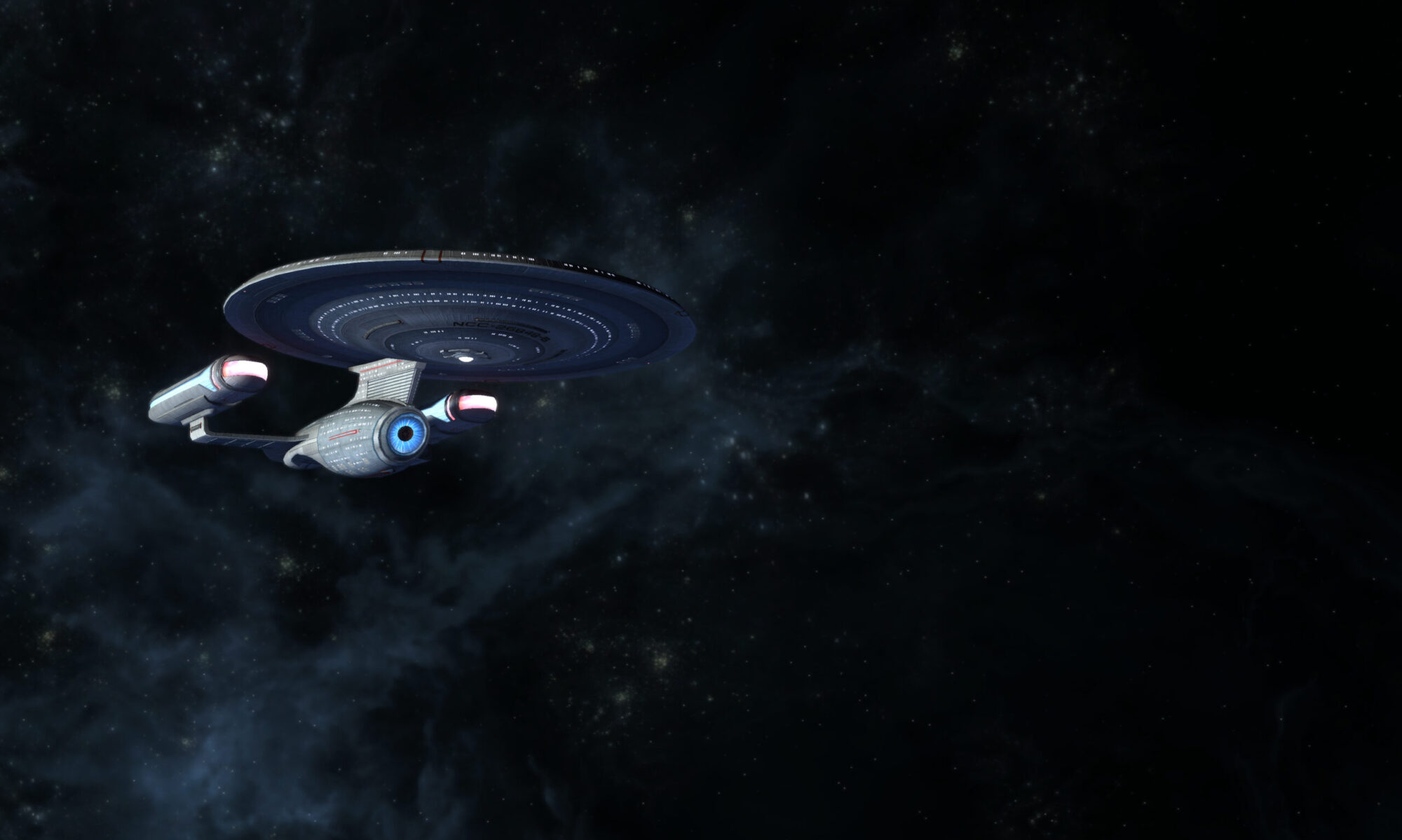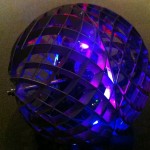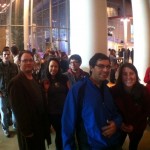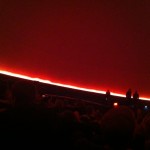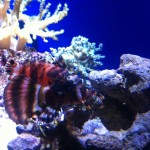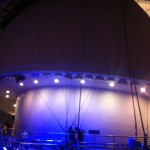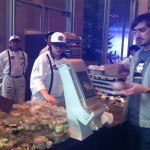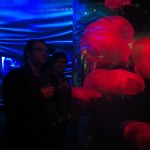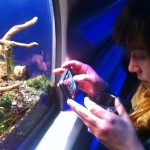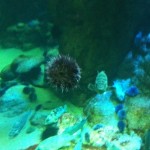Away Team Report: (2011.1117) Academy of Sciences – ‘Into Space’
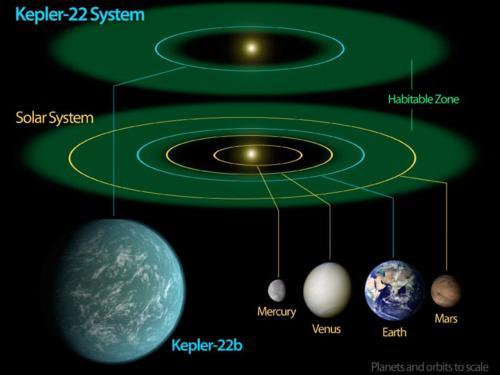
Chief Engineer’s Log: Having successfully traveled back into the early 21st century, we arrived at the California Academy of Sciences, and the crew of the USS Loma Prieta split into teams to examine various aspects of this historic building which. By the mid 22nd century, this bastion of scientific wonder was relocated to make way for the construction of Starfleet Headquarters and Starfleet Academy.
Leading the Engineering team, and accompanied by Ensign Cindy Bee, we proceeded to examine future engineering technology as it applied to space travel during the early 21st century. Our attention was drawn to the NASA table containing the Kepler project. The Kepler project, or just “Kepler”, is NASA’s first attempt to find class M planets outside our own solar system. At this point in Earth history, the only manned space exploration has been to the Earth’s moon.
Using a specially designed, very sensitive, wide-field telescope called a photometer, Kepler seeks to detect planets that can support life, by detecting light from nearby stars that is periodically blocked by orbiting planetoids. Kepler was launched into orbit around the Earth’s sun (Sol) on March 6, 2009 and functions as a very precise light meter. Data from at least three transits of a planetoid must be collected in order to ensure that it is indeed a planet orbiting the given star. Transits occur when the orbit of a planet is along our line of sight to a star. These transits can last from a few hours to about half a day and happen once per orbit.
Once enough data has been collected, scientists can determine both the planet’s size and its orbit from the transits. The planet’s size determines if you could have a life-sustaining atmosphere. Knowing the orbit and type of a star, scientists can determine if the planet is in the “HZ” of that star. The HZ refers to the “habitable zone” and is the range of distance from a star where liquid water can exist on a planet’s surface. With the current understanding of carbon-based life, water is required for the chance for life to develop on a planet outside our solar system, at least life similar to our own. Of course, finding such a planet does not guarantee that it will support life, but this is the first step that NASA has taken to determine this without resorting to further manned missions within the galaxy.
Kepler is pointed at a rich star field in the Cygnus and Lyra regions of our galaxy, the Milky Way, and continuously monitors more than 100,000 stars to look for planets. In the early 21st century, the world was still using a system called the Internet to communicate and store information. By current Starfleet standards, the system was laughably inadequate. Using this medium, information regarding the project could be found at the internet address of http://kepler.nasa.gov. It is amusing to note that Starfleet crews have visited thousands of class M planets in its history, and one has to wonder if the Kepler project had detected any of those beforehand. Upon completing our research, myself and Ensign Cindy Bee concluded our reports and went in search of synth ale, however it hasn’t been invented yet so we had to drink a regional version of beer instead. I have to say, programmers for the replicators and manufacturers of synth ale should really come back in time and get some samples of beer so that they can more closely duplicate the flavors. If only the Academy had been dispensing whiskey, now that would’ve been a wonderful history lesson.
~Lt. Tom Hesser
Chief Engineer
USS Loma Prieta
Starfleet, Region 4
Away Mission to the Academy of Sciences: Tricorder Visual Scan Records
Personnel Report (2011.1201)

Lt. Jon Sung, having successfully completed the STARFLEET Academy Officer Training School and Officer Command Course with Honors, and for exemplary service to the crew of the USS Loma Prieta during its shakedown cruise, you are hereby promoted to the rank of Lt. Cmdr.
By the authority vested in me by the STARFLEET Chief of Operations, you are hereby appointed to the position of Executive First Officer aboard the USS Loma Prieta. A ceremony for the transfer of authority is to be held December 1st, 2011, followed by a promotion celebration.
Furthermore, Lt. Tom Hesser is immediately instructed to assume the role of Second Officer, in addition to his continuing responsibilities as Chief Engineer.
And please also welcome new science officer Ensign Robert Schaefer, the designer of our new logo, who will be a correspondant member based out of Berlin, Germany.
The ship’s present crew structure is as follow, with positions being grouped by division. There are several new positions here which will be included and further defined in the upcoming edition of the chapter handbook.
Commanding Officer – Zach Perkins – Cmdr
Executive Officer – Jon Sung – Lt. Cmdr
Yeoman – Cindy Bee – Ensign
Helm Officer – Andy Smith – Ensign
Chief Engineering Officer – Tom Hesser – Lt
Warp Propulsion Officer – Brian Schroeder – Lt(jg)
Antimatter Technician – Thomas Marrone – Crewman
Replicator Systems Specialist – Pete Hottelet – Crewman
Chief Operations Officer – Nicole Lippman – Lt(jg)
Quartermaster – Tria Connell – Ensign
Transporter Chief – Cody Bratt – Chief Petty Officer
Communications Officer – vacant
Chief Tactical Officer – Ben Roodman – Lt(jg)
Security Crewman – Micah Jolly – Ensign
Security Crewman – Steve Band – Crewman
Chief Science Officer – Samantha Dolgoff – Lt
Science Officer – Robert Schaefer – Ensign
Stellar Cartographer – Shawn Alpay – Crewman
Xenoathropology Specialist – Jenny Wilson – Crewman
Medical Officer – vacant (EMH currently active)
~Cmdr. Zach Perkins
Commanding Officer
USS Loma Prieta
Starfleet, Region 4
Away Team Report: (2011.1113) Rendezvous at Comic Con Austin

The past few months on assignment in the Texas Nebula have been quiet and lonely. Much to my enjoyment, I was notified that the USS Navras and other Starfleet vessels of Region 3, would be rendezvousing in Austin for Wizard World Comic Con 2011! I immediately grabbed my communicator and contacted Crewman Natalie Raff to ask her to join me for what was to be an interesting away mission.
Not having the foresight to don 21st century attire, we were immediately spotted before even entering the building and made to pose for pictures. Upon entering we were amazed at the amount of people and creatures that had traveled from distant star systems to congregate at Wizard World (kind of a small world btw). Apparently some had even traveled through time, as we were told by a pair of “Storm Troopers” that they had come from a distant galaxy long, long ago. Their technology wasn’t quite as advanced though as they could only travel at “light speed” instead of warp. There was even a fellow who claimed to be a god named Thor, but when faced with a phaser to his head he admitted to his mortality. There must have been some major disturbances in our timeline because there was even a picture of a Captain Jean Luc Picard of the USS Enterprise set up at one of the booths.
We couldn’t allow ourselves to be distracted by any of this as our primary mission was to make contact with the USS Navras crew. We searched high and low and were about to contact the Loma Prieta to report a failed mission, when I spotted Fleet Captain Reed Bates, the Region 3 Coordinator! We were both very happy to run into each other in such a strange place. Fleet Captain Reed informed me that the Navras crew had ended their away mission early and headed back to Dallas for debriefing. She also wanted me to let the Loma Prieta know that if they’re interested in conducting some war games that they would like to engage in a round of ARTEMIS!
Having verified the whereabouts of the USS Navras we decided to explore the other cultural aspects of Austin. We found ourselves wandering the streets of the East Austin Studio Tour where artists, painters, sculptors, and other craftsmen were showcasing their work. We even ran into a gentleman with the same last name as me who had a painting that looked strangely similard We discovered a most interesting piece that displayed a cutaway of an internal combustion engine with moving piston and rockers. Such a quaint mode of vintage transportation.
After the art tour we were asked by some of the locals to join them at their favorite watering hole. The bartenders welcomed us with open arms and even invited me behind the bar to act as guest bartender! We ran into a couple of young ladies who apparently had been in contact with the Vulcans as they greeted us with the Vulcan sign for prosperity. After a night of heavy celebration it was time to call the mission a success and end the night with something called an “Irish Car Bomb.” This may have led to climbing things and making silly faces, but I honestly don’t remember.

In conclusion, Ensign Jolly would like to highly recommend that the USS Loma Prieta embark on a away mission for next year’s Wizard World Comic Con in Austin.
~ En. Micah Jolly
Security Officer
USS Loma Prieta
Starfleet, Region 4
